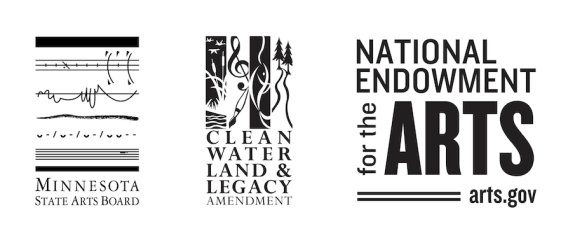
The Goldstein Museum of Design is dedicated to building and preserving a collection in support of the College of Design’s teaching and research community and for use in public exhibitions and programs. We extend our sincere thanks to all collection object donors that make the work we do possible.
Frequently Asked Questions
All objects must be seen by the curator and the Collections Committee and cannot be assessed through photographs alone. In addition, GMD is fortunate to have a robust collection with depth in many areas. Long-term storage needs and the potential that the collection contains a duplicate object are assessed in determining an object’s suitability for the collection.
What happens when I offer an item to GMD?
Curatorial Review
Contact Associate Curator Jean McElvain at 612–625–2737 or [email protected] to schedule an appointment for you to bring in your object for review. Due to tight schedules, there may be a long delay between your initial contact and the date of this object review. The curator will only make off-site visits if you have a mobility issue or your potential donation is so large that it is difficult to transport to GMD.
The curator’s willingness to review an object does not guarantee its ultimate acceptance into GMD’s collection. However, when she agrees to take objects on temporary loan, it is the first step in a two-stage process that concludes with a review by the full Collections Committee.
Interest in Object
Factors that influence GMD’s interest in an object include:
- Condition and cleanliness of the object.
- Design value or how unique it is relative to other objects in the collection.
- Potential use for class or exhibition.
- Significance to design history.
- How much space will be required to store it and GMD’s ability to do that well.
- Overall design quality, including material use and/or construction techniques.
- Ownership history and/or support materials such as photographs of the object.
Collections Committee
The curator presents potential collection objects to the Collections Committee for final review. The Collections Committee is composed of GMD staff, College of Design faculty, and community volunteers. Meetings take place twice a year (July and December).
Deadlines for Curatorial Review
Deadlines to submit objects for curatorial review are:
- June 15 for the July meeting.
- November 30 for the December meeting.
If either deadline date falls on a Saturday or Sunday, objects are due the last working day before July 15 or the last working day of November. Keep in mind the potential lag in your appointment for initial curatorial review when considering these dates. Objects received after July 15 will be presented at the December meeting. Objects received after November 30th will be presented at the July meeting of the following year. There is no guarantee that objects presented to the Collections Committee will be voted into the collection.
What types of objects might GMD accept?
The GMD prefers objects that:
- Are in good condition.
- Have supplemental information such as photographs or information about place and year acquired.
- Have information about how they were made.
- Are constructed with unusual or innovative techniques or materials.
- Are representative of a stylistic era.
- Are complete ensembles or entire objects versus parts of a whole (for example; parts would include a suit jacket without the pants or a teapot without the lid).
- Are iconic objects that reflect shifts in thinking or ways of doing things.
- Have attached designer or manufacturing labels (on apparel after WWII).
- Represent designs or designers not already in GMD’s collection.
Are there objects GMD does not collect?
In general, GMD will not consider:
- Student work.
- Fine art (unless related to functional craft).
- Objects in poor condition.
- Objects contingent on a mandate that they be exhibited, photographed, retained, or stored together.
- Large items such as sofas, dining room tables, bed boards, automobiles, bicycles, etc.
- Resource materials such as books, magazines, exhibition catalogs, newspaper clippings, VHS videos, DVDs, slides, dissertations (with VERY limited exceptions). We refer many of these to the UMN Libraries.
Within apparel and accessories, GMD will not consider:
- Stockings and nylons from the late 19th century through the 1970s.
- Wedding dresses from the late 19th century through the 1950s.
- Late 19th to early 20th centuries (e.g., nightshirts, baptismal gowns, petticoats).
- Performance costumes (dance and stage), uniforms (with VERY limited exceptions), or furs (require refrigeration).
Because apparel and accessories are GMD’s largest collection area, some types of items are well-represented; others are not within GMD’s capacity to store adequately.
What else?
When your object is accepted into GMD’s collection, it is cared for according to museum professional standards and forms the foundation of students’ object-based learning experiences. It takes at least five working hours to process, catalog, and store each accepted object. That is roughly $200 per object. Please consider a monetary gift to GMD in support of collection care to ensure that your legacy within the collection is preserved. In times of declining state funding, this gift will make an enormous difference.




